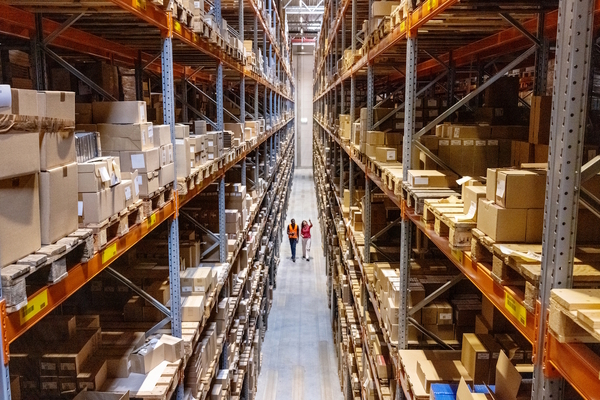A new era for improving workplace safety

Ben Henderson at Intelex Technologies asks what are the main barriers to improving organisational safety culture, and what are the risks of getting it wrong?
Our working lives have changed inconceivably and perhaps irrevocably, over the past two years as we move through the pandemic and emerge into an endemic mindset.
The impacts of Covid-19 are huge: wide-reaching across societies and economies. The ultimate impacts remain to be seen in the long-term. However, what is already apparent in the workplace is a new-found cultural awareness of employee health and safety.
This extends far beyond large organisations in ‘safety critical’ industries to corporates in all manner of sectors and of all sizes. But there’s more to be done to translate this awareness into engagement and action that drives better worker support and protection.
Intelex Technologies’ recent research report, Engaging Workers, Growing Business, Protecting the Planet highlighted that almost two thirds of environment, health and safety (EHS) and environment, social and governance (ESG) professionals acknowledge that their organisation has had workers injured, in an accident, or taken ill in the last 12 months.
Keeping workers healthy and safe is the core priority for businesses across different geographies and sectors. But clearly this remains a key challenge. In the new era of work, what changes are we already seeing in this space, what are the main barriers to improving organisational safety culture, and what are the risks of getting it wrong?
The barrier: shifting from awareness to engagement and action
The main barrier to improving an organisation’s safety culture is ensuring employees are engaged with, and are participating actively, in improving safety culture. Our research found that the number one challenge faced by EHS professionals was improving employee participation in health and safety programmes (41 per cent).
This was closely followed by being able to educate and train employees on health and safety (33 per cent) – and to that end, implementing a culture of safety in the workplace came in third (32 per cent).
Ensuring that employees are properly engaged in workplace safety must be at the heart of corporate culture, not exist independently from it. Best practice EHS needs ongoing senior leadership endorsement to drive employee buy-in.
More often than not, organisations that have won the hearts and minds of an entire organisation and have a high level of safety maturity are those where the corporate culture supports and encourages health and safety excellence, and where this advocacy comes from the top down.
Better employee engagement is fundamental to uncovering incidents and near-misses faster and more effectively. As a result, many organisations are prioritising technology and training specifically targeted at improving health and safety processes.
The trends: the rise in EHS technology and professionals
Of those EHS professionals who have experienced at least one health and safety incident in the last 12 months, almost half are struggling to extract, format and submit the data they need to deal with the challenge successfully. This is compounded by the fact that they are wrestling with inconsistent data across multiple sources and wasting time and effort searching for key information across different IT systems.
The majority, two thirds of EHS professionals are using technology that is not specifically designed for health and safety, with the majority using off-the-shelf products such as SharePoint or Excel. More worryingly, 21 per cent are still reliant on paper for tracking and managing incidents.
It is therefore unsurprising that almost nine out of 10 EHS and ESG professionals believe that implementing technologies and applications specifically designed for monitoring, managing and reporting health and safety would resolve the majority of their organisation’s health and safety issues.
Over the short- to medium-term, there will undoubtedly be an increase in organisations looking to mature their workplace safety culture, and see the use of a bespoke health and safety platform as a way to help facilitate these improvements.
Since the Covid-19 pandemic, there has been a heightened awareness of safety professionals and the work that they do. Leeds University Business School is among those to highlight the enhanced importance of EHS professionals over the past 18 months. Its survey of EHS professionals showed that management support for safety was significantly better; the status and influence of EHS professionals had been enhanced; and that the value and importance of health and safety was elevated.
The risks: how poor EHS performance impacts organisations
There are, of course, dangers for organisations if they fail to improve their health and safety culture. Over three-quarters of the EHS professionals believe their organisation could lose business to a competitor who can better demonstrate how they’re improving health and safety in their company.
There is also concern among professionals that unless they improve their health and safety culture, they will lose skilled workers to better-performing competitors. With the challenges faced by so many companies to attract and retain key workers, the impact could be significant.
What companies need to do to improve their safety culture
To drive employee buy-in and engagement with EHS initiatives, companies must remove their own barriers preventing them from delivering better workplace safety and wellbeing. This creates a virtuous circle: when employees are on board with EHS, this inevitability results in fewer workplace incidents, making organisations safer for their people – and pushing up performance overall.
The easiest way for companies to improve their safety culture is to implement proven, experienced and fit-for-purpose EHS support technological solutions alongside a well-supported internal communications programme from senior leaders. Using the right technology enables EHS professionals to access the information they need quickly and efficiently, and to produce accurate and timely reporting.
The beneficial effects continue; such rigorous technology also helps EHS professionals to easily communicate their findings and better determine what actions need to be taken up and down their organisation – which in turn further improves employee engagement.
As the process for monitoring, managing and tracking incidents becomes simpler and the right people having access to the right data, better decision-making will be a natural outcome.
Ben Henderson is Head of Product Solution Consulting, EMEA at Intelex Technologies. Intelex Technologies’ surveyed more than 700 environment, health and safety (EHS) and environment, social and governance (ESG) professionals for their research report, Engaging Workers, Growing Business, Protecting the Planet, which is available for download here.
Main image courtesy of iStockPhoto.com

Business Reporter Team
Most Viewed
Winston House, 3rd Floor, Units 306-309, 2-4 Dollis Park, London, N3 1HF
23-29 Hendon Lane, London, N3 1RT
020 8349 4363
© 2025, Lyonsdown Limited. Business Reporter® is a registered trademark of Lyonsdown Ltd. VAT registration number: 830519543





